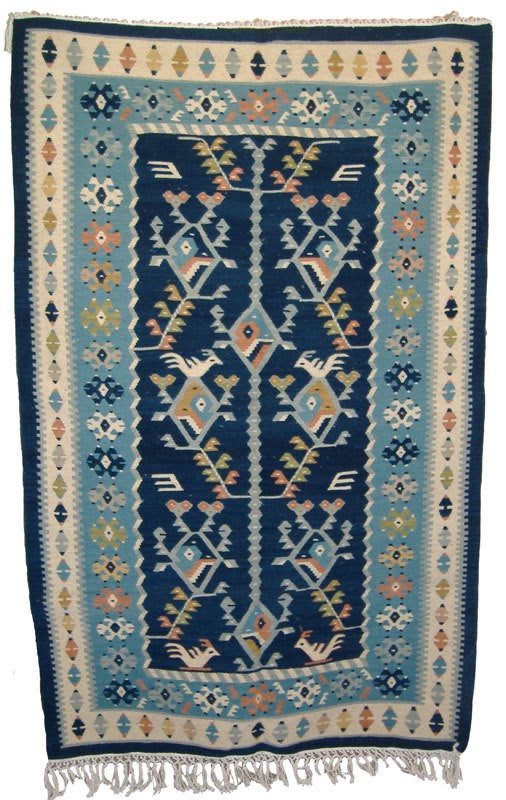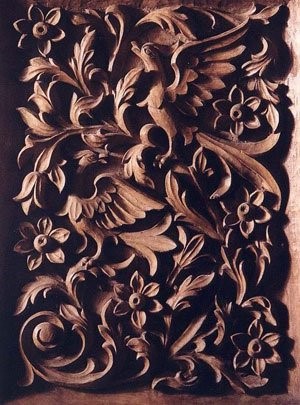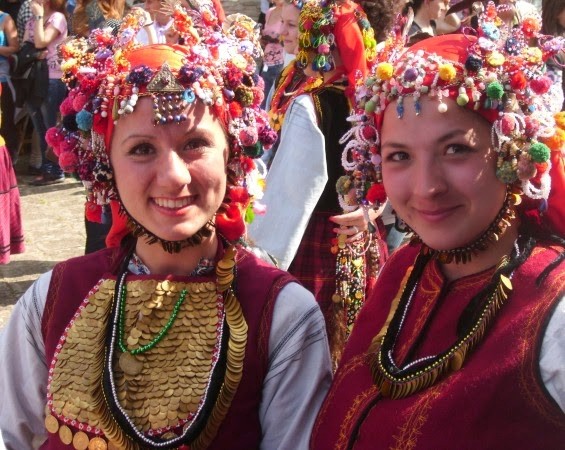By Israfela
The folkloristic understanding of the cosmos up until the end of XIXth century was quite diverse – from ancient myths that could be seen amongst the Indo–Europeans to myths introduced by the Christians. A large amount of the initial understanding and belief has lost its initial meaning and function especially because of the Bogomils (Christian neo-Gnostic sect) and Apocrypha influence but some of them are well preserved. All the data presented refers to the middle or end of XIXth century where the folk perception of the cosmos has been better preserved.
How is the sky perceived by the Bulgarians?
According to the folk belief the sky reflects life on earth; it is a firm bark that consists of seven folds. It’s a lid that covers the earth and it’s made of a substance like glass, soil, or tin. The sun, the moon and the stars are on its lowest fold. But there seems to be several different views about that. Some believed that the sun and the moon would ‘walk’ freely and aren’t attached to the folds, others believed that all three weren’t attached to the folds of the sky. The place where the earth touches the sky is called Kray-Zemlya (end of the earth/world) and none alive could go there.
It is interesting to mention that according to some legends the sky was once quite low and near to the earth and people could touch it with their hands; men who worked on the field would punch it with a pitchfork or the women with a distaff. The sky lifted up as a punishment for people because of their wrong doings. There are different versions of the story how this happened but it is mainly related to people being disrespectful towards it, for example a woman once wiped her child with a wheat spike and tried to wipe herself in the sky and the sky indignant of the woman’s deed lifted up taking with it the wheat spike. It’s because of this that they now look the way they look. This mythologem is similar to Georgian.
The marriage between the sky and earth
The common division of the earth and sky as a female and male principle is also to be seen in folklore belief. The unity of the sky and earth perceived as marriage is what brings fertility and rain and therefore drought was avoided. From this union, the Moon was born and some versions suggest that afterward the sky lifted up and the marriage was dissolved.
The sky
There is also the belief that in the sky there exists a world similar to that on the earth; where people wear a gird on their neck. The people on earth wear it on their waist as it’s positioned in the middle of the world and consequently in the underworld on their knees. In some parts of Bulgaria there’s the belief that in the sky the ‘sky citizens’ live that are like the earthly ones with similar behaviour and habits. A similar concept could be seen also with the Siberian shamans who believe that people and gods live in the sky. For the Altai people and Tuvinians the people who live in the sky are shorter and for the earth people they are evil spirits and vice versa. The notion of the sky entities ‘Tengri’ is typical for many of the Turkic peoples. The Bulgars [‘one of the primary three ethnic ancestors of modern Bulgarians (the other two were Thracians and Slavs’ (Britannica, 2017).] The Bulgars worshipped the divine sky, the supreme deity – Tangra or Tengri. The sky is also the home of the Slavic god Perun, The Greek Zeus and the Indian Indra.
The apocryphal literature suggests also that god stays on the seventh sky. The Bogomils believed that the Lord of the Sky, of the visible sky, is the devil and what happens on the sky reflects what happens on the earth – the everlasting battle between good and evil. According to the Eurasian and Indo-European religion the god and the sky are inseparable. The sky communicates with people through the lightning. In folk belief, the ruler of the sky and thunder is Saint Iliya – his celebration day is in August, he bears the thunder and according to the folk belief he walks across the sky with a golden chariot and searches for the lamia (the female dragon). He throws fiery arrows at the lamia’s face, from which a thunder and a lightning are produced. His image most likely derives from an ancient Pagan deity which was transformed into a Christian saint having the same function. Similarly, all other celebrations in the folklore calendar are associated and closely related to saints whose images and characteristics derive from pre-Christian times.
The World Tree
The World Tree embodies the cosmos. This idea is widely spread amongst different nations and cultures around the world and it certainly has place in Bulgarian folklore where it is often described as ‘a golden fruit bearing tree’ and as a ‘straight tree – tall and lean’, with ‘silver branches, dotted with golden bees’. The tree depicts the three-dimensional division of the world – its crown reaches the skies, its roots the earth (sea) and its stem connects the sky and earth. It is what keeps the universe in balance and even in the medieval literature, although through the prism of Christianity the World Tree is believed to be an element that keeps the universe together (‘an iron oak that has been planted before everything else’). Other names that refer to the same concept of the World Tree from medieval times include also: the Cosmic Tree (the Tree of Life, Tree of Knowledge, Cross Tree etc.). The idea of the World Tree as an important cosmological element is present in Bulgarian folklore, art, and the ritual practices as stated by Georgieva (1993). The World Tree also determines the directions, marks the centre of the universe and through it the other planetary elements are defined – the sun and the moon around both its sides, the birds are in its branches, and the herbivorous animals in its stem, the chthonic and aquatic ones – under its roots. All sorts of different elements and mythological characters are present on it. The space is also organized both vertically and horizontally because of the tree. Furthermore, things that occur on earth ‘bear fruit in the heavenly world’ (Zhelev, 2013). The World Tree represents the organised cosmic space and the constant interaction between the three parts which is inevitable.
Depictions of the tree
Different nations have slightly different understanding on the magic birds that live on the tree. For the Slavs, it is the Firebird – the messenger of the Divine Will and the Keeper of the Magic Apple – the Fruit of Life. It is believed that for the Slavs the World Tree is an oak, but could also be cypress or maple (for Bulgarians and Ukrainians). Zeus creates the sky, the earth and the ocean on a sacred oak. The tree is presented with birds on the top, such as hawk, eagle, or nightingale. In its root there are snakes, zmey (dragon, mythological creature), on its branches there are fruit like apples, pomegranates or precious stones. Sometimes on the top of the oak tree an eagle is depicted. For the shamans in Siberia the eagle demigod landed on a tree. The eagle in Bulgarian folklore symbolises the heavens; it flies freely in the sky and reaches the fountain of ‘live water’ that has the power to rejuvenate and heal. The eagle drinks from that water and that’s why he never gets old. The popular belief is that people shouldn’t touch eagles’ nests, according to the folk songs they nest on an oak or sycamore tree – the trees that are associated with the World Tree. According to folk belief the eagle makes a nest in the crown of the tree and from there it fights with the hail-cloud Hala (mythical female creature that brings storms, whirlwinds or mists in order to destroy the harvest, the fields). A tradition of anointing the inside of the stem of the tree and putting inside frankincense, olive oil and wax exists and is referred to the World Tree. This in itself is a ritual with which an increase of the vital power is aimed. The anointed tree is identical to the World Tree in its function to banish the natural disasters and to ensure fertility.
Image 1. Wooden carving shows in the World Tree with the birds
 Image 2. A Rug showing the world tree
Image 2. A Rug showing the world tree
Microcosm and Macrocosm, from chaos to order
Bulgarian folklore has preserved the idea that the connection between the tree and the human is as follows: the human is microcosm while the tree is the macrocosm. A common belief for many people is that the cosmic elements have their correspondences in the parts of the human body. The young people are often compared to a young tree, the sick to a dry one and the elders to the stem tree. It is important to mention that a great range of the preserved folk songs that contain the motif of the world tree are performed around Christmas time – the tree is always presented as golden. Descriptions of the World Tree could be found in one of the folk songs dedicated to the Christian saints. This of course is a time of transition: the old year gives way to the new one and the period that is known in Bulgaria as the dirty days occurs. These days marks the time in which everything dissolves back to chaos before everything is put again in order and organised cosmic system.

Image 3. Bulgarian traditional embroidery with the world tree motif
The World Tree is also the “Path to the Souls of the Ancestors”. For the old Slavic tradition, it is presumed that the World Tree raj (from raduga) is a place where the souls of the dead live. This element is present also in Bulgarian folklore poetry. The Slavic cosmic tree’s function is also as a path to the world of the ancestors and the realm of the deceased. There are certain ritual practices that are connected with concepts like the planting of the tree on the grave of a deceased unmarried person. This is done so that the soul could be supported and it travels together with the soul.
The tree semantically is connected with the human being, and more precisely with the female, also sometimes with the house. The female figure that can be seen in the folklore art bears the same characteristics as the world tree – she symbolises fertility. The connection with the house is represented with the preserved practices that were once performed by the Bulgarians when the roof of a new house was built. On the roof a wooden cross is made on which are placed gifts for the constructors. In some places a wreath or a fruitful branch of a tree is placed instead. The constructor is perceived as a mediator between the two worlds, who obtains magical powers and can bless and pray for abundance and well-being for the house. The wreath, cross or the brand are all symbols of the World Tree. The tree and its magical significance can be seen in bridal ceremonies as well as in burial ones. The elements of the tree, cross, human symbolises the transformation and transition between the worlds. As mentioned above, the tree plays an important role in the bridal ceremonies: the bridal tree is a symbol of the world tree, it is a pine tree or fruit tree with three branches and on each edge an apple is placed – for fertility. In some parts of Bulgaria this tree is placed on three breads and is decorated with birds. The three breads and branches symbolise the three-dimensional division of the universe. The bread also is connected with the ancestors and their world. The preparation of a bridal flag is a part of the traditional bridal requisite. It also represents the World Tree.
The tree plays a role in the traditional celebrations in the winter around Christmas time. The tree called ‘budnik’ is a mediator between the heavenly and earthly life and it represents the World Tree as well. The above-mentioned anointment rite is performed to the ‘budnik’ and has a specific meaning to magically strengthen the vitality of the World Tree, during the transitional time between the old and the new year, and to further reinforce the equilibrium and order in the universe.
Zmey (Dragon) as representation of the World Tree
Similar to the tree that connects the three spheres – life, fertility and death. The rainbow, the lightning and the zmey (dragon) have the same function.
Zmey (Dragon)
In Bulgarian folklore Zmey is the male dragon and the female one is called Hala or Lamya. The distinction between them is very imporant, because while Zmey can have human features and help people, the Hala brings drought and it is always dangerous and malicious.
The snake or the Zmey (Dragon) is often the cosmic mediator that links the three worlds and in this way could be seen as a different representaiton of the World Tree. The sheperd’s crook, Hermes’ caduceus or Asclepius’ rod could be seen as reminescent of the idea of the World Tree. They all have a whirling snake around a stick/ stem and the spiral ornament reflects the idea of motion and development.
The connection between Zmey and the Maiden Rite of Passage Lazaruvane
In Bulgarian folklore, the Zmey could combine parts of a snake, fish, bird or human. It is presented as a huge snake with fish scales. But the Zmey can also look like a person – a young strong man with wings under the arms. He can also be seen as a ball of lightning or a cloud. But dragons share similar habits with people – so he eats, drinks and gets married. So Zmey can sometimes fall in love with women, particularly young women. If that happens they start visiting these young women at bridal age and slowly but steadily these girls lose power, stop caring about their appearance and stay away from the other people.
The motive of the Zmey (Dragon) is present in its’ entirety in all Easter rituals, including in Bulgarian folklore songs in the period of chaos which is considered to be time that transitions between the season from Spring to Summer and from Winter to Spring. The Zmey is also the main cosmogonic character acting as a mediator between the sky and earth. The mythical creature relates to the idea of transitional period in life and the natural human cycle; a mediator between earth and celestial elements, between water and fire, reigning over people and the world around them. Given the fact that the Spring Maiden Rites contain traces of the archaic belief of the passage of the maidens into another social age group with the right to get married, the mythical image of the dragon appears as a totem with the help of which the ceremony takes place in the ancient scheme: death and rebirth. In this sense, one can say that the ritual performed by the maidens that includes throwing of the wreaths in the river appear as a generalised symbol of the dragon, the underground ruler, and the ritual is perceived as kind of victory over him, followed by the successful entry of girls into their new social status. This coincides with the end of the transitional period during Easter and the restoration of the cosmic order. It is interesting to mention that the chests of the girls’ ritual costumes that consist of gold coins resembles Zmey’s scale.
Image 4. Elaborate decoration on the costume of the girls that resembles scales
The World Tree and the way it is perceived is intertwined in Bulgarian folklore rites and culture. Unfortunately, nowadays it has lost its initial significance and meaning. The form in which it exists today is much in an art or poetical form. The knowledge that we have of it today shows how it was seen in the past and how it underlined the inseparable connection between the cosmic balance, life – fertility – marriage – death.
References:
Encyclopedia Britannica Inc., 2017. Bulgar [online] Available at: https://www.britannica.com/topic/Bulgar Accessed 23.06.2017
Georgieva I., 1993. Bulgarian Mythology, p.15 – p. 19
Markov A., 2013. Dragons and Lamia in Bulgarian Folklore. . Bulgarian National Radio. [online] Available at: http://bnr.bg/en/post/100200249/dragons-and-lamias-in-bulgarian-folklore Accessed 23.06.2017
Shelve R., 2012. The Golden Fruit Bearing Tree. Bulgarian National Radio. [online] Available at: http://bnr.bg/en/post/100144653/the-golden-fruit-bearing-tree?page_3_1=9219 Accessed 23.06.2017
Image 1: http://bulgarfolklore.blogspot.co.uk/2008/07/blog-post_2152.html
Image 2: http://bulgarfolklore.blogspot.co.uk/2008/07/blog-post_2152.html
Image 3: https://www.pinterest.com/pin/550002173223369212/
Email: israfela@paganfederation.org / PFI Bulgaria.
https://www.facebook.com/PFI.Bulgaria/


